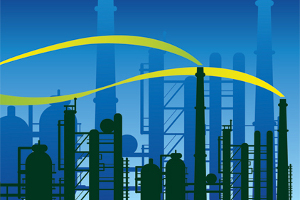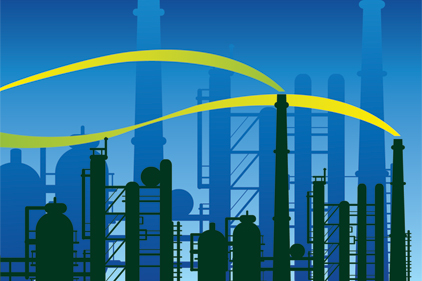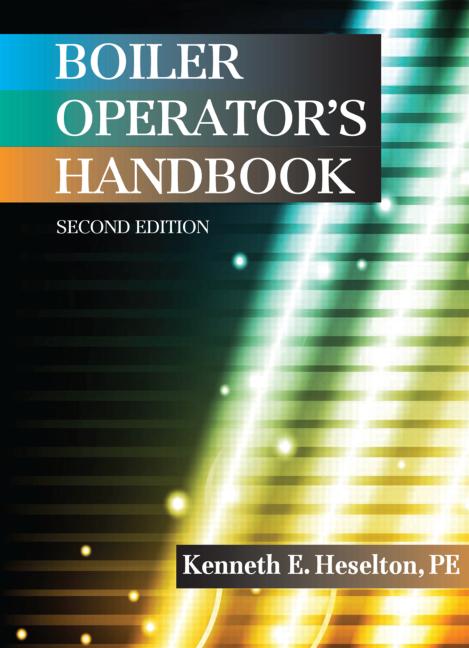
|
The EPA is reconsidering parts of the Major Source and Area Source Rules. While it is carrying out the formal reconsideration process, the EPA announced in May 2011 that it would delay the implementation of the Major Source Rule until further notice. However, the compliance requirements of the Area Source Rule, which include the majority of boilers in the United States, are in effect while the EPA is reconsidering this rule.
DETERMINING THE APPLICABLE RULE
Area source facilities are subject to the Area Source Rule, and major source facilities will be subject to the Major Source Rule when it goes into effect. The EPA defines a major source facility as one that emits 10 or more tons per year of any single air toxic or 25 tons or more per year of any combination of air toxics. A comprehensive list of the regulated air toxics can be found on the EPA website at www.epa.gov. Methods for calculating a facility’s emissions are detailed in the “Preferred and Alternative Methods for Estimating Air Emissions from Boilers” guide, available on the EPA site.
Typically, the majority of major source boilers and process heaters are located at very large industrial facilities, such as refineries, chemical and large manufacturing plants, and large institutional facilities such as universities.
Any facility that is not a major source is classified as an area source. Most boilers covered by the Area Source Rule are located at commercial and institutional facilities, with a smaller number in the industrial sector. Commercial boilers include those found in stores/malls, laundries, apartments, restaurants, and hotels/motels. Institutional boilers are found in many locations, including medical centers, educational and religious facilities, amusement parks, and municipal buildings. Many manufacturing facilities are also area sources.
MEETING COMPLIANCE REQUIREMENTS
Facilities subject to the Area Source Rule should have submitted an initial notification of applicability form by September 17, 2011. If the form was not submitted, complete it and turn it in as soon as possible. A copy of the form is available at www.cleaverbrooks.com/epa.
Additional compliance requirements can range from fuel metering and regular tune-ups to emissions monitoring. Facilities also must maintain records and file periodic reports to demonstrate compliance. The extent of actions and number of reports to be filed varies depending upon the following boiler criteria: fuel type, size, and age.
All Area Sources can be classified as one of the following fuel subcategories:
• Biomass — any boiler that burns at least 15% biomass on an annual heat input basis;
• Coal — any boiler that burns any solid fossil fuel and no more than 15% biomass on an annual heat input basis;
• Oil — any boiler that burns any liquid fuel and is not in either the biomass or coal subcategories; and
• Gas-fired — any boiler that burns gaseous fuels, including: natural gas, process gas, landfill gas, coal-derived gas, refinery gas, hydrogen, or biogas, not combined with any solid fuels. To maintain status as a gas-fired boiler, periodic burning of a liquid fuel cannot exceed a combined total of 48 hours during any calendar year.
Boiler size, as it relates to the Area Source Rule, is expressed in terms of rated design heat input capacity and is measured in million British thermal units per hour, or MMBtuh.
A boiler is considered an existing source if construction or reconstruction began on or before June 4, 2010. A boiler is considered a new source if construction or reconstruction began after June 4, 2010, and the applicability criteria was met when construction started, or the boiler switched from firing natural gas fuel to a solid fossil fuel, biomass, or liquid fuel after June 4, 2010.
The following are examples of Area Source Rule boiler requirements:
• For a large, existing, oil-burning boiler, the fuel must be metered, a tune-up needs to be conducted every other year, and a one-time energy assessment completed.
• For a large, existing coal-fired boiler, the fuel has to be metered and it must meet mercury (Hg), carbon monoxide (CO) and particulate emissions limits.
Cleaver-Brooks has set up an educational website at www.cleaverbrooks.com/epa to make it easier for facility managers to understand the EPA’s new rules for boilers. On the site, managers can find out which rules and work practices apply to their facility, and they can download the necessary forms for completion. For information about fuel metering options or other compliance solutions, contact an authorized Cleaver-Brooks representative. TB
Goggins is director of marketing communications and development for Cleaver-Brooks. Cleaver-Brooks is a world-renowned provider of boiler room products and systems that helps customers and the industry reduce energy usage, cost, and environmental impact. As the pioneer of packaged firetube and watertube boilers, Cleaver-Brooks is the only manufacturer to offer an entirely integrated boiler room solution for any size application. Visit www.cleaverbrooks.com for
more information.






